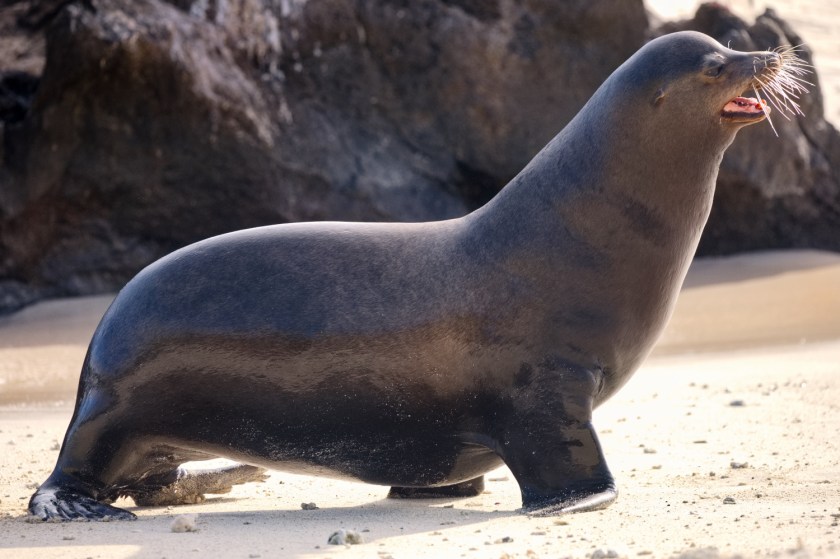From Galapagos we flew to Guayaquil. We could have stayed on the plane all the way to Quito, but first stop was Guayaquil, so we got off to have a look. Possibly the main thing we learned about Guayaquil, is that we would not want to go back there again. The place feels strangely dangerous. As we got out of our taxi, I spotted armed guards either side of the hotel entrance. Later, as we walked into town, we saw that all the larger shops, pharmacies, banks and offices also had armed guards. Smaller shops used solid steel shutters, barred windows and barbed wire. It had just gone dark when we were wandering back and we heard a gunshot. I am no expert on this, but I could not think what else would have made the sound. By then, the streets were virtually deserted although it was only early evening. We walked in different directions from the hotel and found the same story everywhere. That was enough for us. Nothing bad happened, we were not assaulted or accosted, we did not see anything happen. Even so, we were happy to push on to Quito.







In Quito, we stayed at a delightful old hotel at the edge of the old part of the city. Quito’s historic centre is among the largest and best-preserved in the Americas. In 1978 it was one of the first World Cultural Heritage Sites declared by UNESCO. We spent a couple of days happily wandering around here. Narrow streets, old buildings, small park areas, public squares and many old churches. There were also a few museums which we skipped and no end of tourist-orientated shops. We also found some terrific places to eat. First of these was a vegetarian Italian restaurant. We arrived at dusk and were shown to a table in a small open courtyard inside the building. Very atmospheric. Especially when the candles were brought out. Electricity in Quito appears to be a bit of a problem. There is electricity but not everywhere and not all the time. A strong dependence on hydroelectric power is currently a problem because of the severe drought. For several years the rainfall has been dangerously low. This combined with poor maintenance of the power stations and a general lack of capacity has caused a program of rolling blackouts lasting up to 14 hours. Some shops use generators. Typically, these are running on the pavement outside and this makes for a very noisy city. Our restaurant used candles which was really quite lovely.







In the central square, we found a hat shop. Panama hats. As you know, Panama hats come from Ecuador where they are also known as Jipijapa hats or toquilla straw hats. There are several stories about why they are called Panama hats. Possibly because they were popular amongst workers on the Panama canal. In 1906, U.S. President Theodore Roosevelt visited the construction site and was photographed wearing a Panama hat. Perhaps my favourite story is that Panama hats were introduced at the World’s Fair in Paris 1855. Ecuador was out of favour with France at the time and so they were marketed as from Panama. The quality of a hat is essentially determined by the number of fibres per inch. A good one will have more than 300. The absolute best, known as Montecristis, after the town of Montecristi, Ecuador, can have up to 3,000 fibres per inch. This particular hat shop specialised in the more up market model. They started at $500 (USD) each and went up to a rather eye watering $21,000. We didn’t buy one despite being subjected to a good 20 minutes of high-powered sales pitch. A little further down the road we found a shop specialising in stuffed Capybara. We did not buy one of those either but they were rather cute.







There is a cable car in Quito. This will take you up to a fantastic viewpoint at 4,100m. We arrived there more breathless than ever. The views were well worth the effort. We took a slow walk along a ridge to a slightly higher vantage point. Along the way Diane found some swings. We also paused to be photographed with some llamas. Obviously, we needed to borrow hats and ponchos for this.







Our last evening in Quito there were fireworks. We never found out why but we were still quite happy to watch them from the rooftop terrace of our hotel. I also managed to get a photograph of the magnificent Basílica del Voto Nacional. This splendid gothic church is illuminated at night. Looks terrific but I did wonder if the Catholics were getting more than their fair share of electricity.





























































































































































































































































